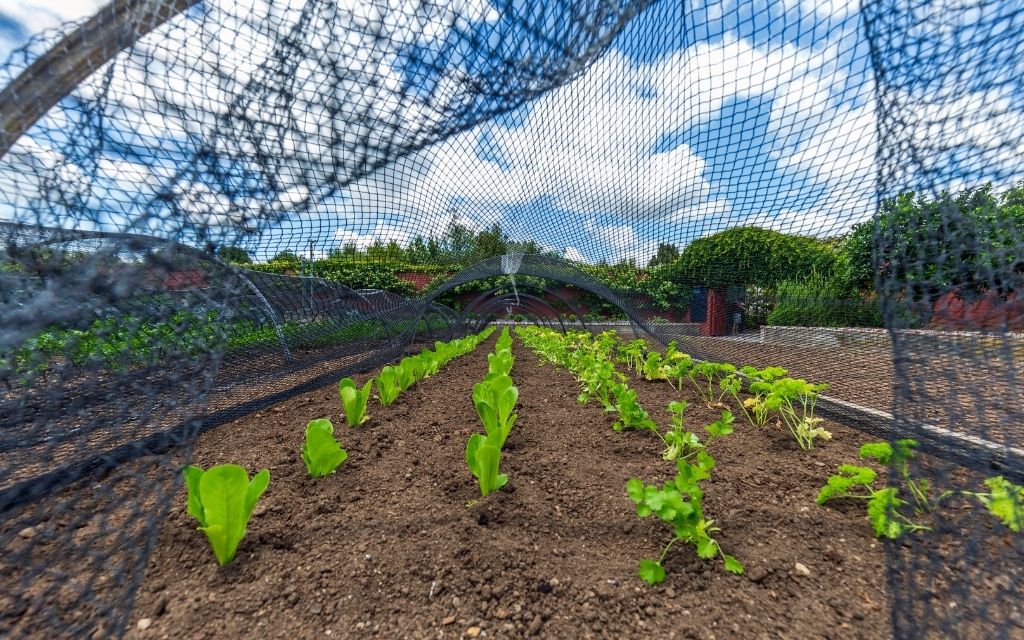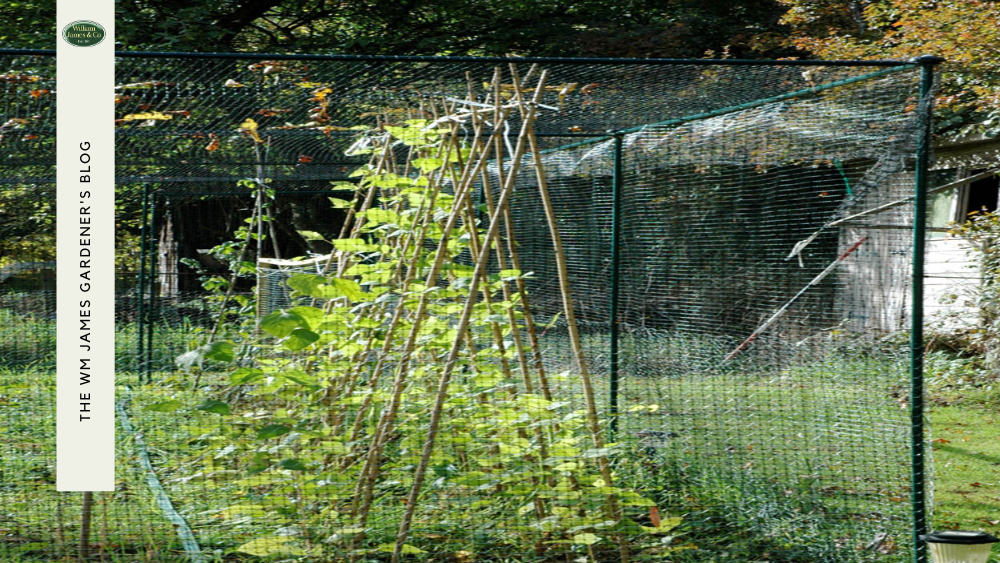We use cookies to make your experience better. To comply with the new e-Privacy directive, we need to ask for your consent to set the cookies. Learn more.
Mesh Garden Netting For Fruit & Vegetable Protection
- Admin
- WM James Gardening Blog
- 18 May 2022
-
38views

Garden netting is very useful in protecting all of your fruit and vegetables.
It is available in many different sizes and shapes, so it can be used to protect anything from rows of corn to a lone cherry tomato plant. Mesh netting is the most versatile type of garden netting because it allows light and water through while keeping pests out.
William James mesh garden netting comes in a variety of materials and styles, including made-to-order nets for protecting fruit trees, bird and butterfly netting to prevent fruit and veg becoming damaged, and heavy-duty plastic netting, which is popular for fruit cages.
We use a few types of mesh nets, including PVC coated polyester, which is extremely durable and can withstand weathering from the elements. It also blocks out UV rays, which prevents damage to plants underneath!
There is also netting made from polypropylene which is lightweight and flexible, making it easy to install over even irregularly shaped plants. This type of netting is also UV-stabilised, meaning it will last for years without fading in the sun.
Along with a host of netting accessories, including twine, rope, and wire, you can trust William James to look after your garden or allotment.

Why Should I Cover My Garden With Netting?
When thinking about using netting for your garden, you’ll want to weigh up the pros vs the cons. To help you understand why this could be a great idea, here are the three main benefits.
- Keeps out many types of pests, both large and small
- It still allows for water and sunlight to get through
- Netting can be removed and cleaned easily
The one downside you might have with netting is that it could impact the aesthetic choices you’ve made for your garden. However, knowing that your plants are safe may be worthwhile to you.
How Do You Use Garden Mesh Netting?
There are a number of different ways you can use garden mesh netting.
- Drape the netting over plants and vines
- Weigh or pin it down to the ground with stakes
- Attach to a frame or fruit cage
Garden mesh netting is a very easy tool to keep pests away, and with the many different ways to use it, it can be done in an emergency without worrying about building a secure border around your plants.
How Do You Secure Netting Over Your Garden?
One of the simplest ways that you can do this is by using stakes such as these plastic ground pegs or even metal tent pegs which you might have already.
You can also attach it to any frames, trellises, or fences that you might already have in your garden. You can do this with metal screws, nails, plastic tie wraps or garden string.
7 Garden Mesh Netting Recommendations
There are a variety of different nets you can use for your garden, and all serve their own specific purposes. However, it’s worth noting that most work well as a general barrier, at least for the largest of pests like deer, foxes, and rabbits.
Black General-Purpose Garden Netting
As a great standard choice, this general purpose netting will do the job. It has a subtle appearance due to its dark colour and can be attached easily to one of our fruit cages, as well as any frames and fencing you have in place.
This netting is great for stopping everything from deer to birds, as these critters can do significant damage to mature plants and seedlings alike.
Garden Bird Netting Made To Order
Similar to general-purpose netting, this garden bird netting can keep all types of birds away from your crops.
Everything from pigeons to sparrows and starlings can be harmful to your garden, and while birds generally benefit the garden by eating insect pests, they also eat seeds and small shoots too.
Butterfly Netting
One of the biggest threats to our crops is the humble caterpillar. While butterflies are incredibly beautiful and serve a purpose in our gardens, and are effective pollinators.
Unfortunately, the damage that their offspring can do to our plants can be devastating, and this is why many people opt for butterfly netting, which has much smaller holes than the previous options.
Rot-Proof Fruit Tree Netting
For our large fruit trees that don’t fit inside fruit cages, we can actually add special fruit tree netting to them.
This netting is also rot-proof, reducing the need to keep replacing the net or removing it from the tree for prolonged periods of time. The fruits of certain fruit trees are prime targets for birds and squirrels, and placing a net around the tree allows it to grow healthily and reduces the impact that these pests can have.
Black Knotted Fruit Cage Netting
These are heavy-duty netting options for some extra stability for your fruit cage. This works well against more determined pests that may try to push or bite their way through the netting.
Knotted fruit cage netting like this can be cut to any size you want to fit your cage perfectly. The same can be done for other types of netting too.
Heavy Duty Plastic Fruit Cage Side Netting
Similar to the knotted variation of netting, this heavy-duty netting for the side of your fruit cage is a fantastic, sleek option for keeping pests at bay.
Not only does it work well against rabbits and other large mammals, but due to the size of the holes, it also prevents smaller critters from getting in like birds, rats, and even mice. It’ll also work on larger insects too.
Fine Insect Garden Netting
If insects are the main problem you’re having, however, you’ll want to get a specialised insect garden net to keep those bugs away from your crops.
The main issue tends to be the offspring of these insects rather than the bugs themselves, and this netting functions very much like a mosquito net with a mesh size of just 0.22mm x 0.80mm.
Conclusion
Adding nets to your garden is incredibly beneficial and can reduce the risk of your crops, flowers, and trees from sustaining unnecessary damage that would be caused by unruly creatures in your garden.
Remember that there are many types of nets to choose from, so be sure as to what type of net you need to counteract the problem pests in your garden area.
FAQs
How to fix garden netting?
As with most materials, garden netting can undergo temporary, make-shift repairs using sturdy cable ties and garden string. You can even stitch smaller meshes together, repairing tears that would otherwise act as an entry point.
Mesh netting for a garden fence?
You can certainly use mesh netting for garden fences, and this can work well to protect any climbing plants, as well as any plants situated along fence borders. You can drape the netting down over those plants and secure the net to the ground too.
Garden nets for strawberries?
You can use any type of garden net for a strawberry plant, whether it’s a larger mesh to keep things out of your fruit cages or even use some garden fleece as a temporary cover too.
Garden nets to keep bugs out?
Your best bet for keeping bugs out of your fruit and vegetable cages as well as away from individual plants is to cover or shield them using a fine insect garden net. The holes of these are small enough to keep most insects out. Don’t forget to keep an eye on these plants still, as certain tiny bugs like mites will get through any type of netting.












